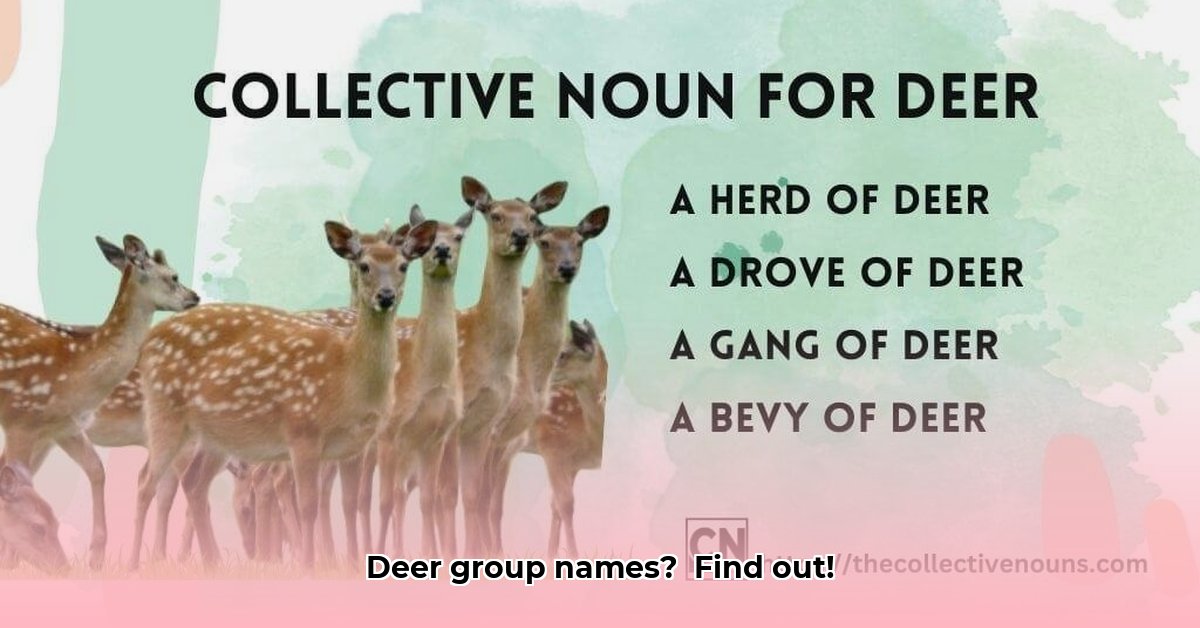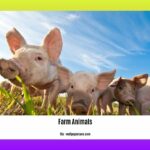When encountering a group of deer, the term “herd” often comes to mind. However, the language used to describe deer gatherings is far richer and more nuanced. This guide explores the diverse terminology surrounding deer groups, delving into historical context, regional variations, and practical usage.
Beyond the Herd: Exploring Deer Group Names
While “herd” serves as a general term, more specific and evocative options exist, reflecting the intricacies of deer behavior and our long-standing observation of these animals. This linguistic diversity adds depth to our understanding and appreciation of deer in various contexts.
Common Terms and Their Applications
Herd: This widely recognized term typically denotes a large, mixed-sex group of deer. It’s the most versatile term, suitable for general descriptions of large gatherings.
Bevy: Implying a smaller, more cohesive group, “bevy” often refers to female deer and their fawns. This term carries a sense of elegance and tranquility, fitting for descriptions of close-knit family units.
Parcel: “Parcel” suggests a distinct, smaller cluster of deer, often used in situations where a group is clearly separated from a larger herd or when emphasizing a particular grouping within a larger population.
Bachelor Group: This straightforward term specifically designates a group of male deer, commonly observed outside of the breeding season when males tend to congregate.
Mob, Gang, Leash: These terms, while less frequent, add to the lexicon of deer group names. “Rangale,” with its French origins, suggests a more organized or structured group. “Mob” and “gang” are more informal terms for groups of animals.
Etymological Insights: Unveiling the History
The origins of these terms offer a glimpse into the evolution of language and our relationship with deer. “Herd” traces back to Old English, reflecting our long history of observing and interacting with these animals. “Bevy,” originally used for birds, demonstrates the crossover of animal group terminology. “Rangale” highlights the influence of other languages and cultures on our understanding of deer.
Regional and Species-Specific Variations
Deer terminology is not static. Regional dialects and specific deer species influence the preferred usage of certain terms. What might be called a “bevy” in one region could be referred to as a “parcel” in another. This variation underscores the importance of understanding local terminology and species-specific behavior when discussing deer groups.
Practical Usage: Choosing the Right Term
Selecting the appropriate term depends on the context and desired nuance.
| Situation | Recommended Term(s) | Considerations |
|---|---|---|
| Large, mixed-sex group | Herd | The most common and versatile term. |
| Smaller group, any composition | Parcel, bevy, bunch, mob | “Parcel” for distinct groups,”bevy” for female-led groups, “bunch” for informal use, “mob” for less organized groups. |
| Exclusively male deer | Bachelor group | Precise and unambiguous. |
| Formal/scientific contexts | Herd (with species and number) | Provides clarity and specificity (e.g., “a herd of 20 white-tailed deer”). |
Conclusion: Appreciating the Richness of Deer Terminology
While a single, definitive answer to “what is a group of deer called?” remains elusive, the variety of terms enriches our understanding of these animals and their complex social structures. By appreciating the nuances of each term, we enhance our ability to communicate effectively and accurately about deer in various settings, from casual observation to scientific discourse.
- Old Mexico Map: Border Shifts 1821-1857 - April 19, 2025
- Blindness Doesn’t Limit: Popular Blind People’s Inspiring Success Stories - April 19, 2025
- Discover Famous Chinese People: A Deep Dive into History’s Impact - April 19, 2025
















